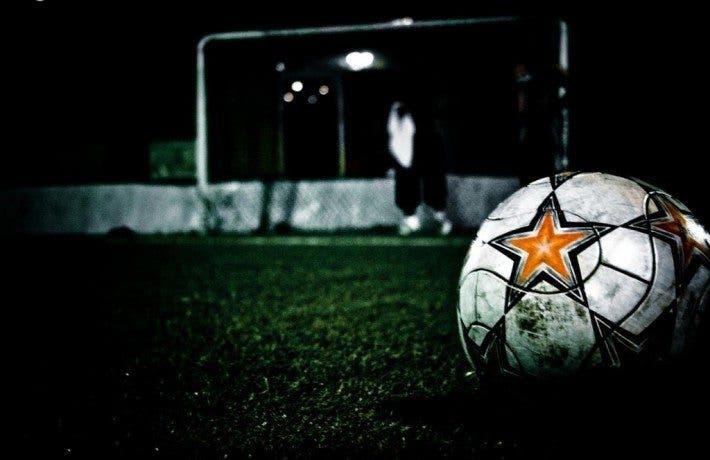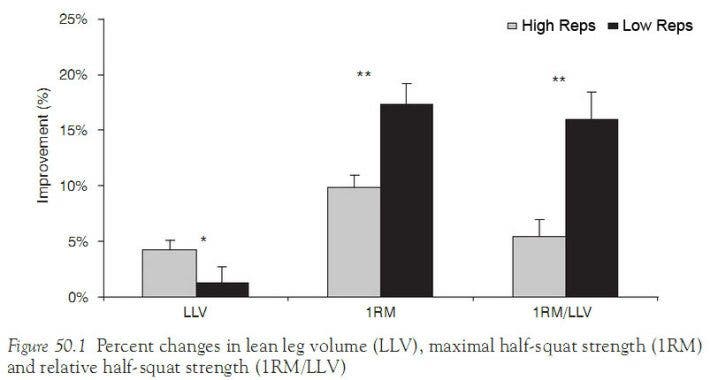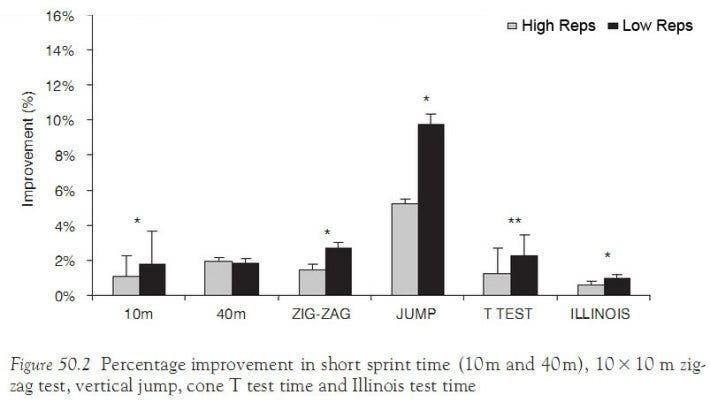Reaching optimal form, high performance on the pitch and, at the same time, achieving the physical power necessary to perform highly complex and demanding technical plays is possible. In fact, it is much simpler than you can imagine . Soccer is considered the King of Sport in a huge number of countries and is present on all continents: where there is a ball, there is soccer. Therefore, it is not surprising that there is a huge bibliography of studies associated with the relationship between training and performance in soccer.
Whether you play in a national or regional league, lower-tier leagues, or just play soccer with friends in college or neighborhood leagues – weight training is going to help you a lot. There is a false belief that soccer and the gym are incompatible, that professional players don’t follow tough weight training programs, and that soccer is a substitute for leg training.
That is to say, instead of taking advantage of the enormous benefit of weight training to increase performance and form in soccer, or of increasing the muscle gains achieved in the gym thanks to complementing it with a sport; instead, a large number of people end up choosing one or the other. I go further, even when a footballer decides to complement his training with work in the gym, he does not know how to train there to improve his performance.
If you are here it is because you want to know what benefits it can offer you and how you should train in the gym. In the next few paragraphs you will find the information necessary to achieve this, scientific studies on the matter and a training plan that you can follow from tomorrow , to improve your performance in a much faster way. Show your teammates what you are worth, impress your coach and feel great within the team .
This article focuses on strength and power training in the gym, however, for optimal results they should be complemented with technical and tactical work, individualities were never good in football and you need to learn how to take advantage of your strength and dexterity. to improve your role on the pitch. Now, let’s get to it.
In addition, in Training.com we have already published a training plan for soccer players, a real success that has helped many like you, male and female players, of all levels. The information offered there is complementary to what you will find below, do not hesitate to read both publications since they do not overlap each other.
Why train in the gym as a footballer?
Soccer, contrary to what you might at first believe, is a mainly anaerobic sport. A match is mainly made up of short and quick plays and actions, so it is extremely possible to continuously perform explosive actions with a small recovery time. It is estimated that an elite player performs approximately 1.67-2.22 such actions per minute.
Strength training in the gym has very similar characteristics, hence the great benefit it can offer you when it comes to improving your performance in soccer. Here are some data that corroborate the importance of anaerobic effort in soccer.
- During a football match, elite players (the studies were conducted on English Premier League players) performed between 150 and 200 short and intense actions that lasted between 1.9 and 2.8 seconds each (1), in 49% of them were the distance traveled was less than 10 meters and 96% of them, the distance traveled was less than 30 meters (2,3). Additionally, tackles, spins, and jumps are also high-intensity activities.
- High muscle strength is required to perform jumps, shots, tackles, turns, backstrokes, and speed changes (2,4,5).
You already know that it can benefit you, however, I am sure you want to know how much and how …

How to train in the gym to improve your performance
He who knows how to train has a world won. You will be able to improve your body and your game in a relatively short space of time. It is obvious that 2-hour sessions in the gym 4 days a week are not going to help you anything except injuring yourself and losing physical performance. However, you want the opposite: to take your performance on the field to a much higher level.
Once you start training, any training plan you find on the net will not work. Your main objective is not to gain muscle, nor to lose fat. Those main goals want to be achieved by people looking for an aesthetic improvement with their training. Does it mean that you will not improve your body, aesthetically speaking? Not to mention, you will improve it, without a doubt. However, your main objective is quite another: you seek to improve your performance.
A different goal, a different way of training . Sounds logical, right? Well, unfortunately, the normal thing is to end up training like any other regular in the gym and, forgive me the expression, that is wasting time. Neither you, nor me, we like to waste time. Let me show you how to train to achieve your goal: be and feel important in your team, regardless of the league.
In an interesting study (6) 18 soccer players were divided into 2 different groups that trained as follows. On the one hand, the strength training group (which we will notice with the initials LR, Low Repetitions, or few repetitions in Spanish) trained by doing 4 sets of 5 repetitions at 90% of the 1RM intensity, with 3-minute breaks between sets. . On the other hand, the hypertrophy training group (which we will notice as HR, High Repetitions, or many repetitions in Spanish) trained by doing 4 sets of 12 repetitions at 70% of 1RM intensity, with 1.5-minute breaks between sets.
X% of 1RM means the percentage of weight, or intensity, with which an exercise is performed based on its maximum repetition or personal record. For example, for a person with a 90 kg max squat repetition, 90% would mean 81 kg.
Improvements from both workouts were recorded on two different tables. These were the results:

As you can see, both training with high and low repetitions considerably increased the volume of the leg (LLV), the maximum repetition in squat or force (1RM) and the ratio between both, that is, the result of dividing the force gained between the increased volume (1RM / LLV). However, it is the low repetition (LR) training that offered the best results .
Why is the 1RM / LLV ratio important? In football, and in any game in general, any weight gain must be accompanied by an improvement, either in speed, power or strength. Gaining weight without a noticeable increase in any of the above attributes can seriously impair performance in most sports. Therefore, a high 1RM / LLV ratio ensures that all the weight gained carries with it a very important increase in strength.
However, these parameters do not represent well how a footballer’s athletic performance improves. Don’t worry, the study also measured the following parameters:

Again, both workouts led to an increase in all parameters. But what do they mean? All of them are expressed as percentage improvements with respect to the initial situation of the footballers; “10 m and 40 m” mean sprint for 10 meters and sprint for 40 meters, respectively. “ZIG-ZAG” represents a 10 x 10 m zig-zag event with 45º changes in the running direction. For its part, “JUMP” is a jumping test, “T Test” is an agility test (you can see its execution in this video), and finally, ILLINOIS is another agility test, (you can see its execution in this video).
Without a doubt, training in the gym with low repetitions and high intensity is optimal for soccer . You can see obvious improvements not only in strength, but also in vertical jump, running speed, and agility. Again, low-repetition training provided the best results.
Training plan for footballers
You are willing to become great on your team, to be a better player and you know how you can benefit. Congratulations, because you have already achieved more than most soccer players. Now I am going to offer you 2 different training plans with which to increase your performance and improve your form.
To learn how to achieve peak form through your training, as well as choose the ideal intensity with which you should train to achieve it, know the best soccer training plan, an almost obligatory reading if you want to improve even more as a footballer by increasing of your performance through gym work.
If you want a plan with which you can start now, and start planting the seeds of what will be your success, right now I will share with you a complete training plan for 5 weeks, which can be used cyclically to continuously increase your strength, speed and agility. It is convenient to be familiar with training in the gym, know the correct technique for each of the exercises and know what your maximums are in squat, deadlift and power clean (or power clean).
Have you never done and do you know the power clean technique? Visit the introductory article to the power clean that we have published and ask your gym instructor, your coach or your physical trainer if they can teach you. It is possible to learn it by yourself but it is necessary to correct the technique. Check in your area if there are gyms specialized in Crossfit or the nearest weightlifting federation, they can undoubtedly help you learn the movement.
This training plan arises from the modification of various training plans of professional teams, likewise, they are basic tables that can be modified depending on the needs or weaknesses of the soccer player. Some of these training plans I got them through http://www.sportsscience.co/, feel free to visit it for more information on scientific training articles.
The format is as follows: Exercise, No. of series x No. of repetitions (y, in main exercises), Intensity in% over the 1RM.
Week 1
Monday
- Power clean, 5 x 4, 80% of 1RM.
- Dumbbell lunges, 3 x 10.
- Incline Bench Dumbbell Raises, 3×10.
- Pull-up with supine grip, 3 x MAX.
- Lateral raises, 3 x 10.
- Planks, 2 x 45 seconds.
- Hyperextensions, 3 x 10.
Wednesday
- Jump squat, 4 x 5.
- Romanian deadlift or deadlift, 5 x 4, 80% of the 1RM.
- Dumbbell bench press, 3 x 12.
- Barbell row, 3 x 12.
- Unilateral Dumbbell Military Press, 3 x 10.
- Sit-ups, 3 x 10.
Friday
- Squats, 5 x 4, 80% of 1RM.
- Nordic hamstring curl, 3 x 10. If this is your first time doing this exercise, start with 2-3 reps for each set. It is a very demanding exercise.
- Dumbbell row, 3 x 12.
- Incline press, 3 x 12.
- Inclined or bird lifts, 3 x 12.
- Weighted sit-ups, 3 x 8.
Week 2
Monday
- Power clean, 5 x 4, 85% of 1RM.
- Dumbbell lunges, 3 x 10.
- Incline Bench Dumbbell Raises, 3×10.
- Pull-up with supine grip, 3 x MAX.
- Lateral raises, 3 x 10.
- Planks, 2 x 45 seconds.
- Hyperextensions, 3 x 10.
Wednesday
- Jump squat, 4 x 5.
- Romanian deadlift or deadlift, 5 x 4, 85% of the 1RM.
- Dumbbell bench press, 3 x 12.
- Barbell row, 3 x 12.
- Unilateral Dumbbell Military Press, 3 x 10.
- Sit-ups, 3 x 10.
Friday
- Squats, 5 x 4, 85% of 1RM.
- Nordic hamstring curl, 3 x 10. If this is your first time doing this exercise, start with 2-3 reps for each set. It is a very demanding exercise.
- Dumbbell row, 3 x 12.
- Incline press, 3 x 12.
- Inclined or bird lifts, 3 x 12.
- Weighted sit-ups, 3 x 8.
Week 3
Monday
- Power clean, 5 x 4, 90% of 1RM.
- Dumbbell lunges, 3 x 10.
- Incline Bench Dumbbell Raises, 3×10.
- Pull-up with supine grip, 3 x MAX.
- Lateral raises, 3 x 10.
- Planks, 2 x 45 seconds.
- Hyperextensions, 3 x 10.
Wednesday
- Jump squat, 4 x 5.
- Romanian deadlift or deadlift, 5 x 4, 90% of the 1RM.
- Dumbbell bench press, 3 x 12.
- Barbell row, 3 x 12.
- Unilateral Dumbbell Military Press, 3 x 10.
- Sit-ups, 3 x 10.
Friday
- Squats, 5 x 4, 90% of 1RM.
- Nordic hamstring curl, 3 x 10. If this is your first time doing this exercise, start with 2-3 reps for each set. It is a very demanding exercise.
- Dumbbell row, 3 x 12.
- Incline press, 3 x 12.
- Inclined or bird lifts, 3 x 12.
- Weighted sit-ups, 3 x 8.
Week 4
Monday
- Power clean, 5 x 4, 95% of 1RM.
- Dumbbell lunges, 3 x 10.
- Incline Bench Dumbbell Raises, 3×10.
- Pull-up with supine grip, 3 x MAX.
- Lateral raises, 3 x 10.
- Planks, 2 x 45 seconds.
- Hyperextensions, 3 x 10.
Wednesday
- Jump squat, 4 x 5.
- Romanian deadlift or deadlift, 5 x 4, 95% of the 1RM.
- Dumbbell bench press, 3 x 12.
- Barbell row, 3 x 12.
- Unilateral Dumbbell Military Press, 3 x 10.
- Sit-ups, 3 x 10.
Friday
- Squats, 5 x 4, 95% of 1RM.
- Nordic hamstring curl, 3 x 10. If this is your first time doing this exercise, start with 2-3 reps for each set. It is a very demanding exercise.
- Dumbbell row, 3 x 12.
- Incline press, 3 x 12.
- Inclined or bird lifts, 3 x 12.
- Weighted sit-ups, 3 x 8.
Week 5
Take new highs in Power clean, Deadlift and Squat. On different days, increase the weight by 2 to 2.5 kg in each series that you try to exceed the previous maximum. The rest of the week: rest.
How can I continue from the 5th week?
You can carry out the training plan for 5 more weeks, with the new 1RM that you will have reached in the 5th week. It can be repeated more times but, especially due to the possible monotony, the selection of exercises could be changed.
How do I select the weight in the rest of the exercises?
For exercises where you have to do 10 reps, start with a weight that you can do 12 reps with. Similarly, for exercises in which you have to do 12 repetitions, start with a weight with which you can do 15 repetitions.
How do I gain weight in the rest of the exercises?
Each time you complete all the sets with all the repetitions of an exercise, increase the weight. In case of not completing them, repeat the exercise with the same weight the following week until you are able to complete it.
In particular cases:
- In the jump squat, perform it with a barbell in the squat position. You can add weight but never exceed 20% of the 1RM in the squat.
- In Nordic femoral curls, you do not have to increase the weight, but rather reduce the speed at which you perform the repetitions. This will only be done if you have reached 10 fast repetitions.
- In pull-ups, you can add ballast to increase the intensity.
- On planks, increase duration by 5 seconds after completing them in one session.
How much can I improve?
This program, together with correct technical and tactical training, will increase your performance on the pitch from the second or third week, but it will be after 2 months when you notice a significant jump in your performance. You will be more important to the team and you will feel better on the field together with your teammates.
Sources
(1) Mohr M., Krustup P., Bangsbo J. Match performance of high-standard soccer players with special reference to development of fatigue. J. Sports Sci. 2003; 21: 439-449.
(2) Reilly T., Bangsbo J., Frank A. A multidisciplinary approach to talent identification in soccer. J. Sports Sci. 2000; 18: 695-702.
(3) Stolen T., Chamari K., Castagna C., Wisloff U. Physiology of soccer. An update. Sports Med. 2005; 35: 501-536.
(4) Bangsbo J. Energy demands in competitive soccer. J. Sports Sci. 1994; 12: 5-12.
(5) Wisloff U., Castagna C., Helgerud J., Jones R., Hoff J. Strong correlation of maximal squat strength with sprint performance and vertical jump height in elite soccer players. Br. J. Sports Med. 2004; 38: 285-288.
(6) Sixth World Congress on Science and Football Proceedings: Effects of hypertrophy and a maximal strength training program on speed, force and power of soccer players. G. Bogdanis.